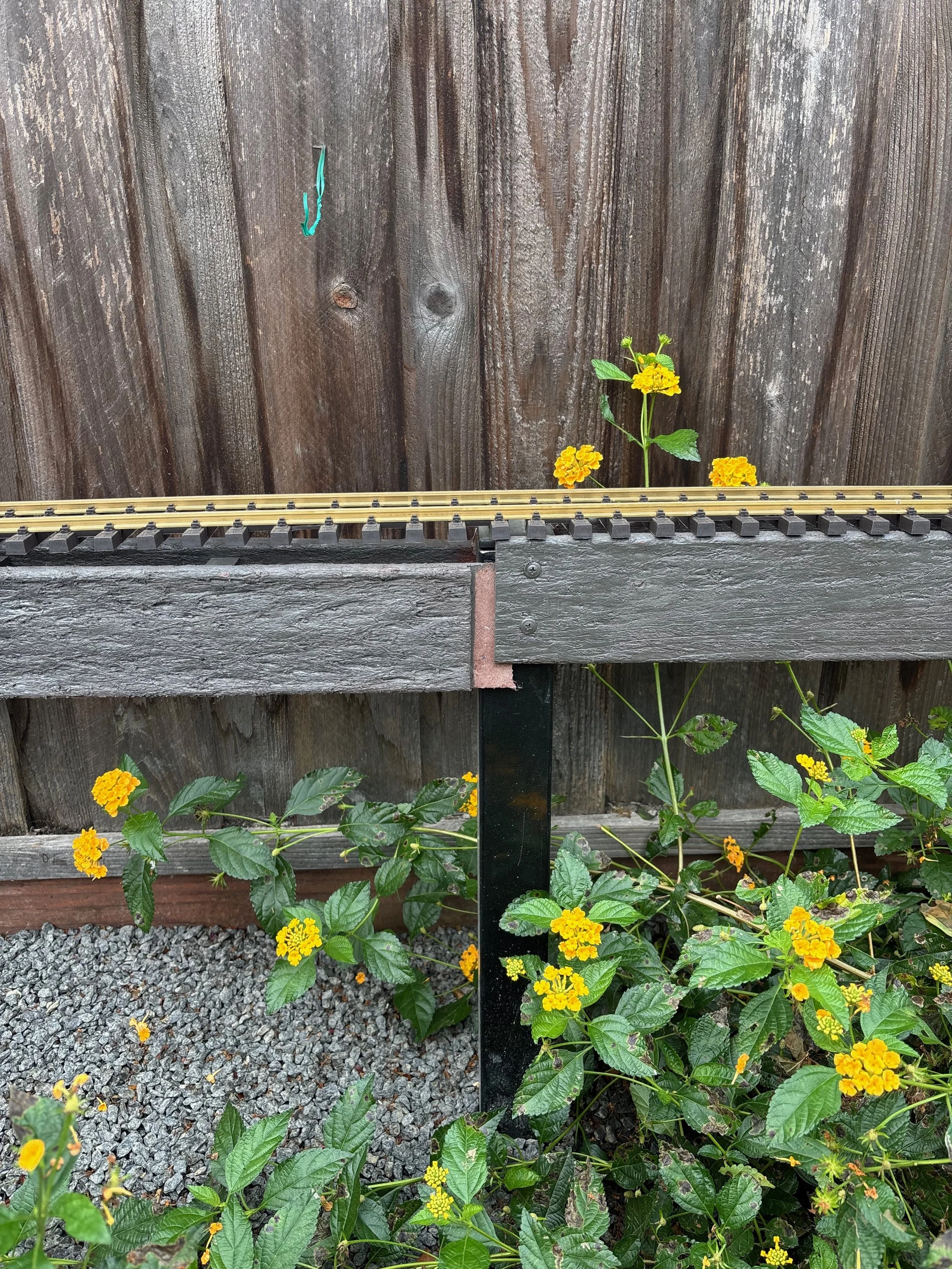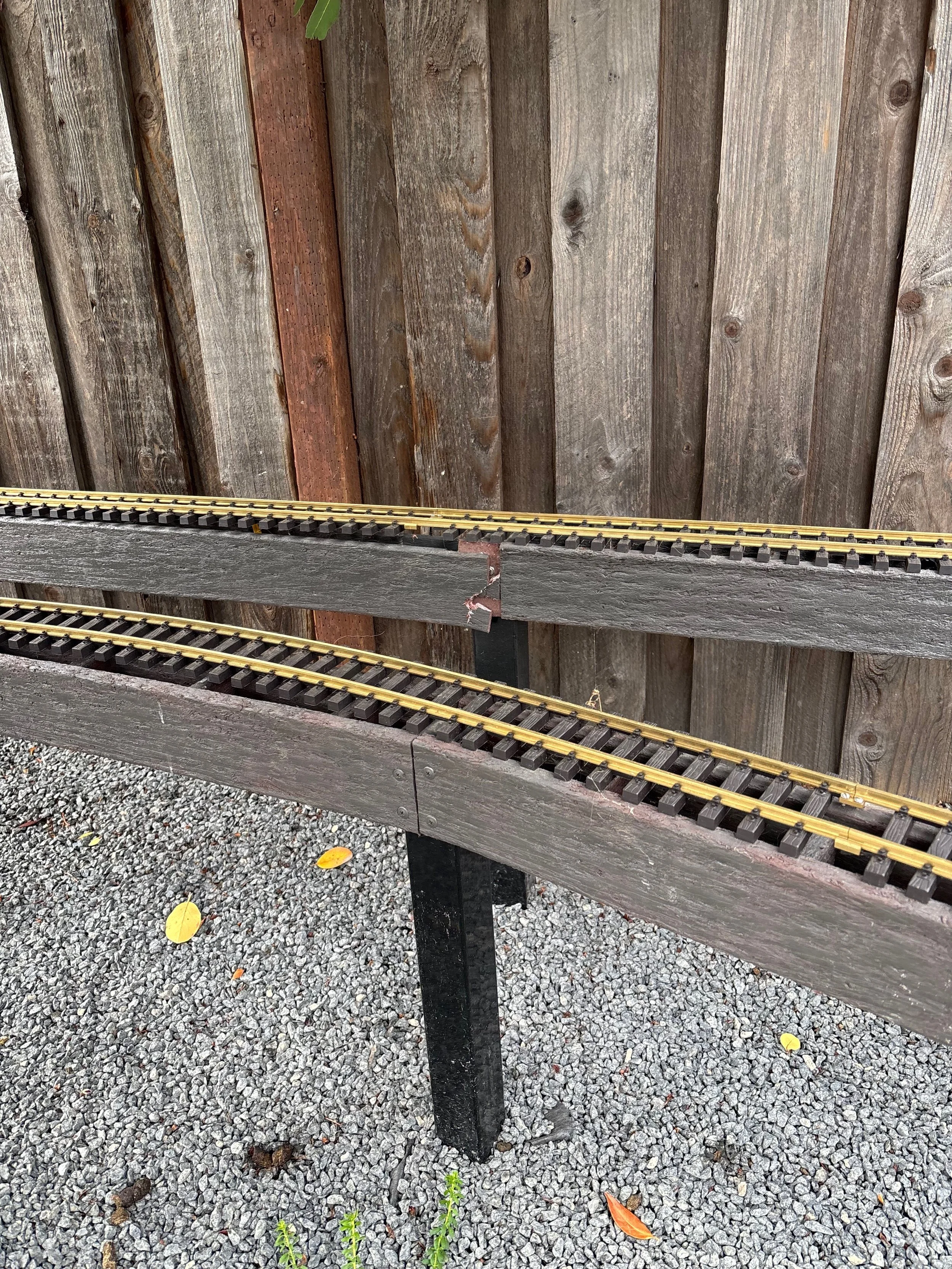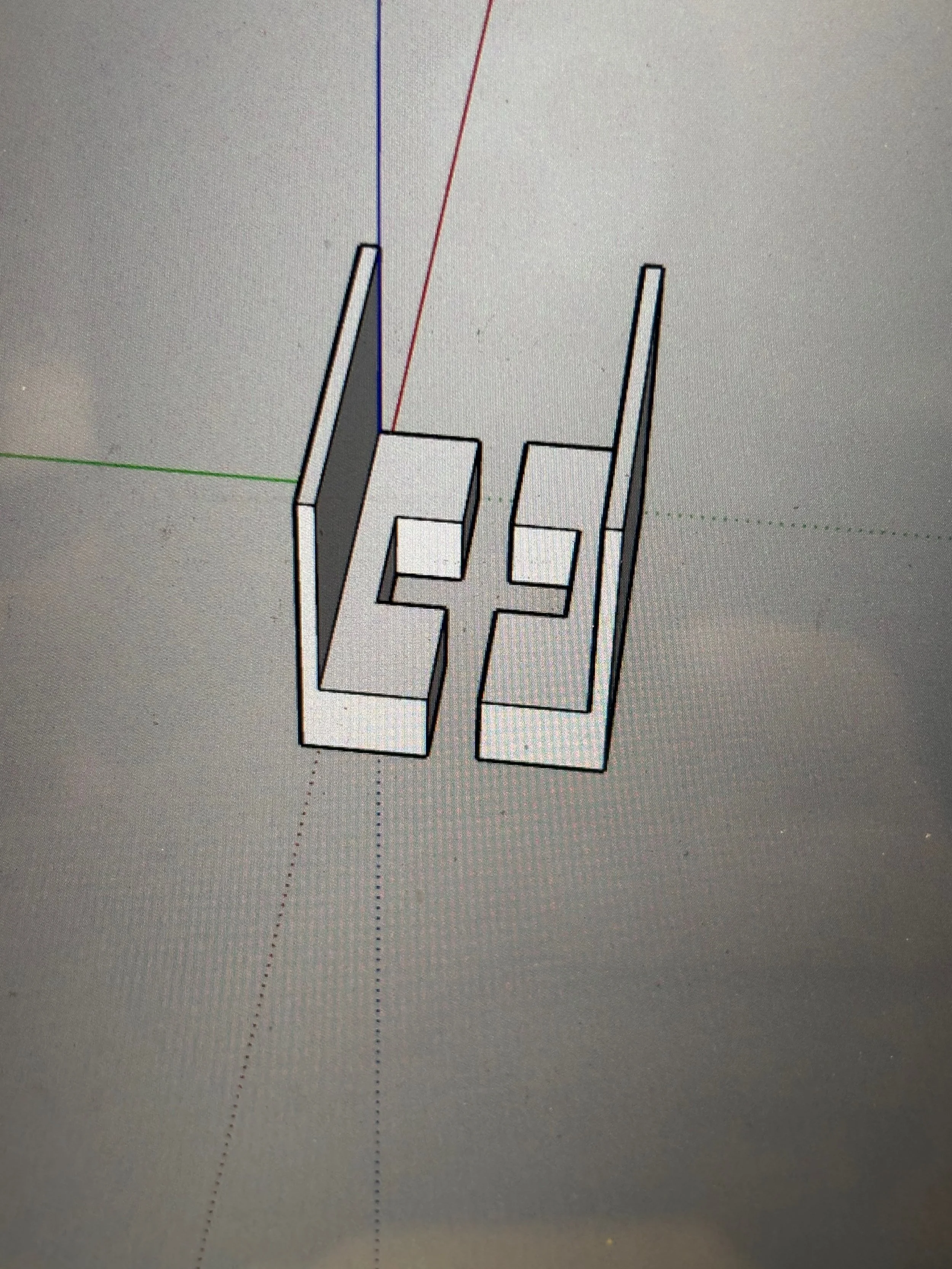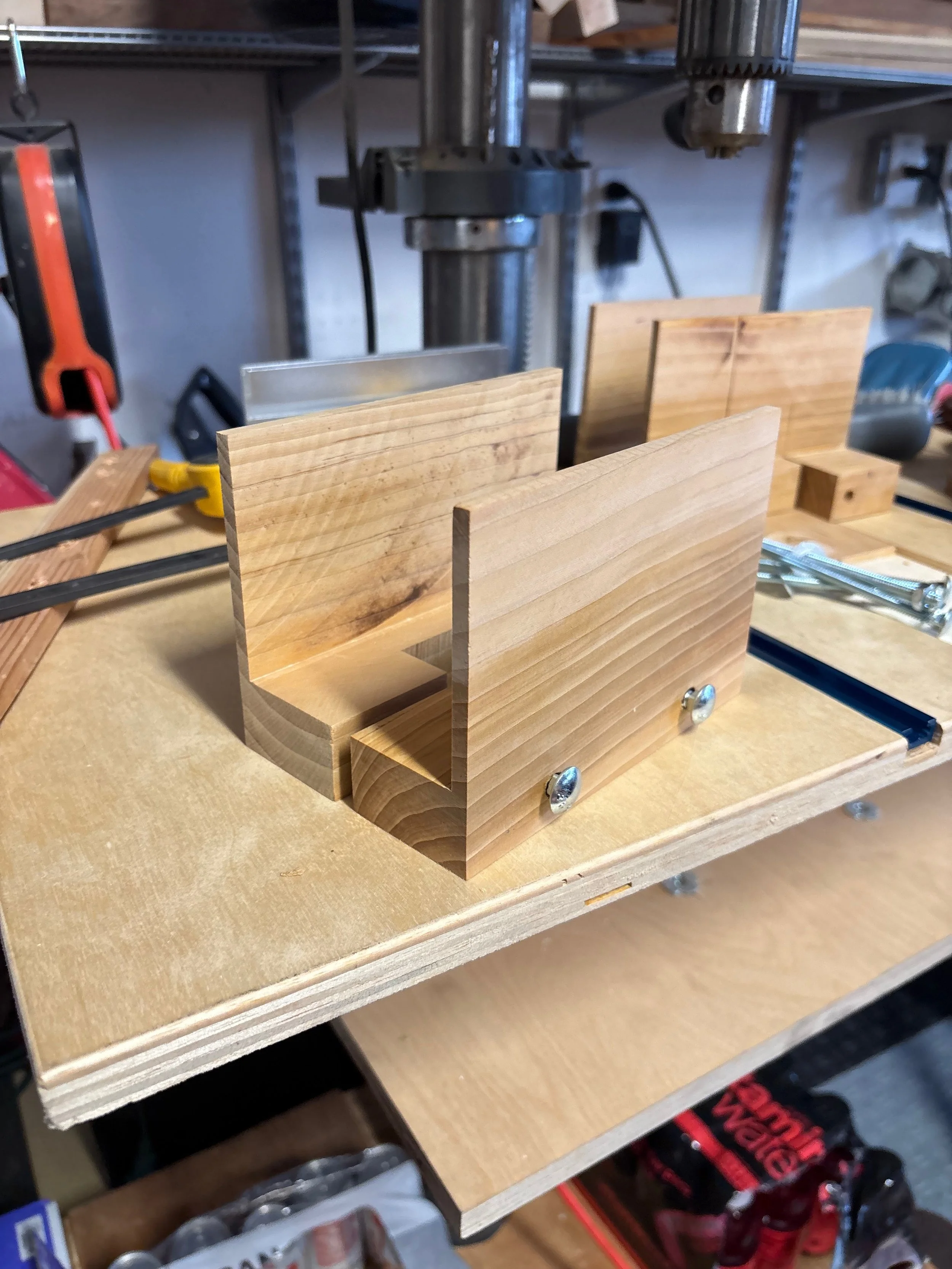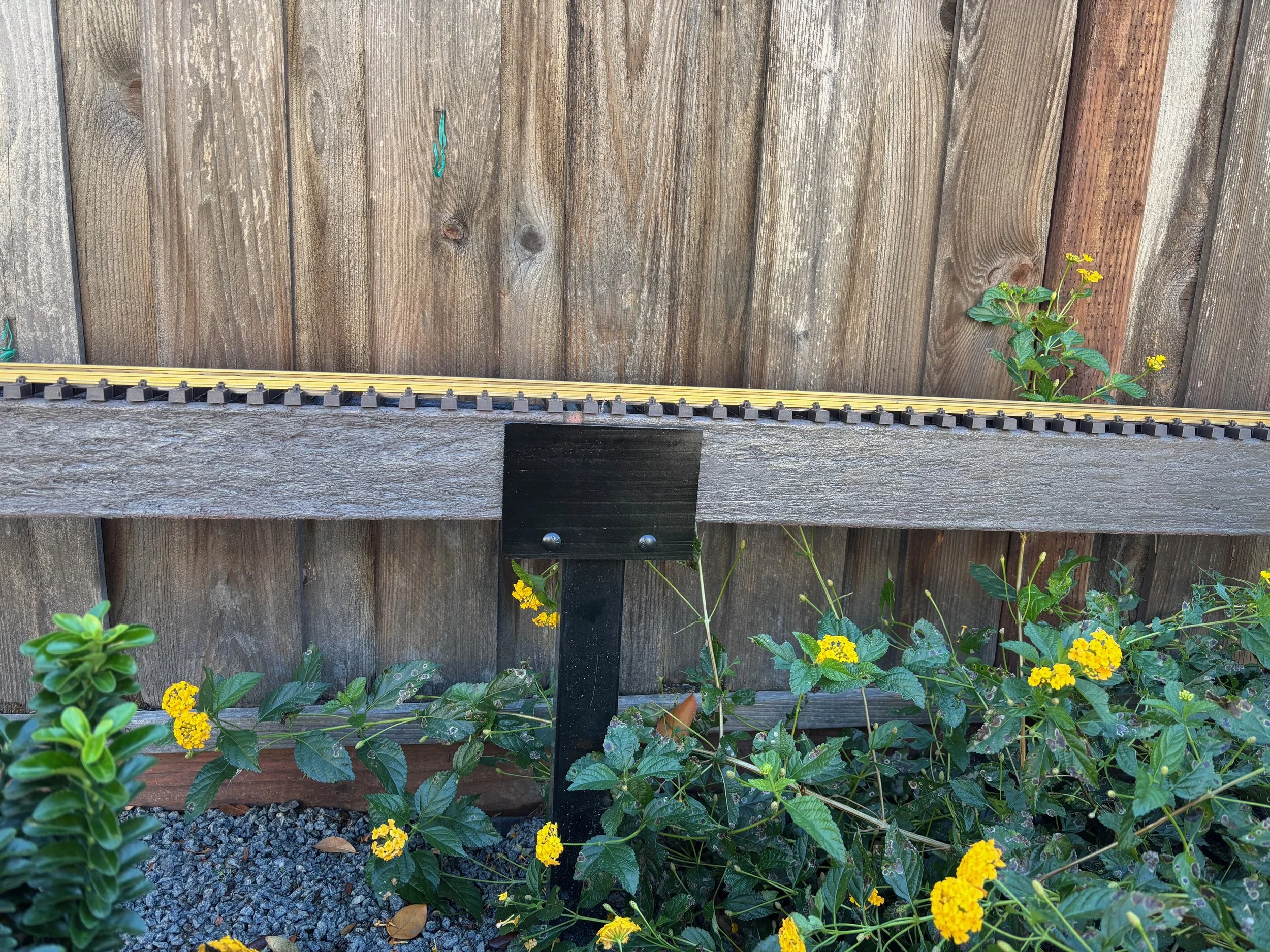Fixing a failure on the raised track bed
The raised track bed used design ideas I found here. I used steel posts instead of plastic ones recommended and installed them with concrete for increased longevity/stability. For the HDPE materials I used bender board that I got from a local lumber yard and it looks great. I secured the bender board to the posts with screws. Most of the joints were butt joints where one length of bender board ended and another began but there were a couple of times where things lined up and I could use the lap joints that the bender boards came with. In this case there is an overlap where each end that meets is half its usual width allowing for them when joined to be the full width. A screw through both joined them to the post. These failed and required me to come up with some way to address this failure.
I used the free sketch-up app to design a support system that I could secure to the post and provide support under both sides of the bender board to solve the problem. The support system is composed of two parts that are joined with carriage bolts. The posts are 2” square so each part has an opening that is 2” wide and slightly less than 1” deep. This way, when they are installed on either side of the post they are not quite deep enough and the carriage bolts can be tightened clamping the two parts together securing them to the post at the exact height I want them. (See pictures below)
I made them out of hardwood and painted them black.
This led me to an idea of how I will be able to add structures that are at the level of the track. I can make similar clamps with a ledge that will allow me to create elevated platforms.
I then asked my 3D printing guru (Shelby - see “Friends of the Line”) to take my sketch-up design and print out a spare to be used in case of any future failures. I also want to see if they will be strong enough to support a raised platform.
